Part 2 of our Still-Wanted Localizations feature includes “The Big One,” and likely some games you may be surprised to see!
The Love-de-Lic Trilogy: Moon, UFO: A Day in the Life, Lack of Love
Writeup by Robert Fenner
Love-de-Lic may have only released three games over the course of four years before disbanding, but their output was incredibly unique, important, and influential, which makes it triply tragic that none of their games saw a release outside Japan.
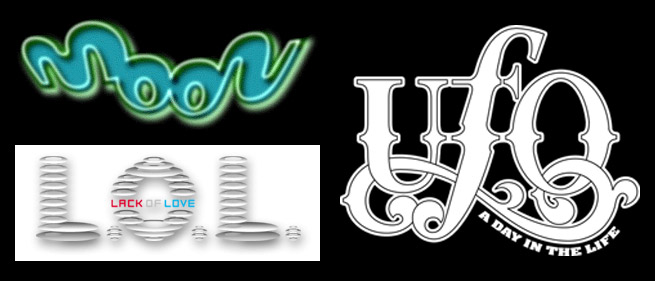
Moon: Remix RPG Adventure
PSone | Released in Japan: October 16, 1997
First, there was Moon: Remix RPG Adventure, in which a young boy is sucked into the world of his favorite RPG. It turns out the supposedly courageous hero is, in actuality, a selfish jerk content to harass the townsfolk for clues on how to complete his quest day in and day out, and slaughter any fauna that stand in his way. The boy realises he must “gain love, not levels,” and embarks on a quest to bring this love to every being within the game. Undertale-who?
UFO: A Day in the Life
GameCube | Released in Japan: June 24, 1999
Next up is UFO: A Day in the Life, a proto-Chulip in which a UFO crash-lands into a not-so-ordinary apartment building. The aliens’ leader, MOTHER, tasks a cute lil’ UFO on an expedition to the building to photograph proof that the missing aliens are present. The only problem is, the aliens are invisible, so you have to rely on spotting any anomalies, tenants’ startled reactions, or bizarre events that seem to occur without any discernible reason. Once you bring the negatives back to MOTHER, she, err, promptly eats them, and if your reconnaissance was successful, you’re given access to more places and times of day within the apartment block. Part adventure game, part puzzler, UFO: A Day in the Life is all charming.
L.O.L: Lack of Love
Dreamcast | Released in Japan: November 2, 2000
Last, but not least, there’s L.O.L: Lack of Love, an evolution adventure for Dreamcast. Featuring soundtrack and scenario both penned by YMO’s Ryuichi Sakamoto, L.O.L follows on from UFO’s theme and begins with a lonely robot who lands on an alien planet with the aim of terraforming it to be fit for human life. However, the player does not control the robot, but rather a new lifeform as it hatches from an egg. The goals are survival and evolution, and how the lifeform chooses to interact with its ecosystem governs how this will play out, whether that be ascribing to survival-of-the-fittest or fostering symbiotic relationships with other beings. Interactions in L.O.L are discerned through movement, sound, and body language, rather than text or speech. The lack of language means there’s no language barrier; unfortunately a low print run makes L.O.L the hardest Love-de-Lic game to get hold of. This one’s a no-brainer for a re-release.
Three incredibly forward thinking games, years ahead of their time. The spirit of Love-de-Lic is still very much alive in their alumni’s creations; particularly Dandy Dungeon, Million Onion Hotel, and the Chibi Robo series, but it would be nice to see the work that started it all in English one day.
Mother 3
Game Boy Advance | Released in Japan: April 20, 2006
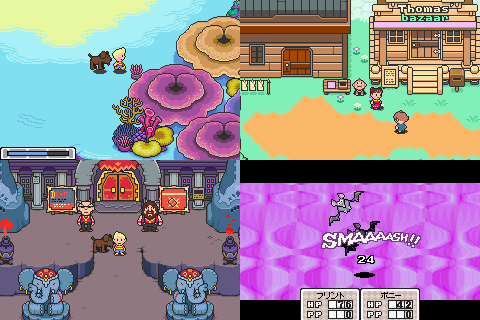
There’s an early sequence in Mother 3 that really sets the stage for what’s to come. The game is mostly set in and around Tazmily Village, a laid-back town whose residents share their skills and provide services to each other out of the goodness of their hearts. It’s a warm-hearted, if not quiet place, but things are soon thrown into disarray by the arrival of the Pig Mask Army. The thing about the Pig Mask Army is they’re not your run-of-the-mill Evil Empire; they arrive with smiles on their faces to teach the residents of Tazmily about money, industry, and consumerism. It’s at this point that the villagers stop cooperating and start charging. From then on, Mother 3 concerns the transformation of Tazmily into a bustling tourist trap where only the rich survive, while the poor, rightful citizens are segregated to a slum prison out of sight and out of mind.
It’s quite the turning point, and an unexpected one, at that. While Itoi had included touches of his wry observations of society within EarthBound, Mother 3 is unabashedly a Marxist polemic against late-stage capitalism. It’s incredibly well-played, thoughtful, and quite anti-Nintendo; no doubt a big factor as to why Mother 3 still hasn’t received an official English release twelve years down the line. However, that doesn’t mean we’ll stop asking. Ever.
Writeup by Robert Fenner
Slime MoriMori Dragon Quest 1 & 3
Game Boy Advance | Released in Japan: November 14, 2003 (1), November 2, 2011 (3)
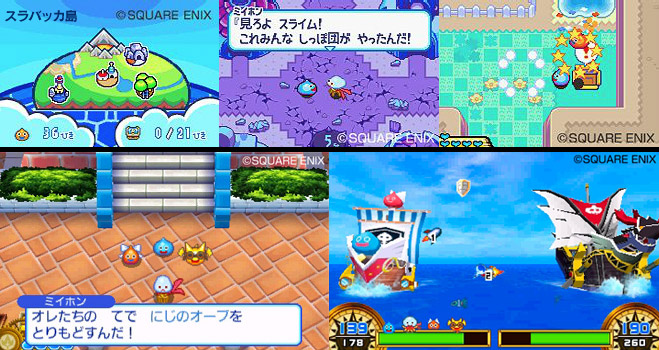
The DS action RPG Dragon Quest Heroes: Rocket Slime was a fun diversion from the series’ traditional turn-based combat. The plucky slime Rocket uses a giant tank to save his homeland and rescue his 100 Slime friends and family from a dastardly mob of other Dragon Quest monsters in a fresh, humorous adaptation of Dragon Quest concepts.
But were you aware that Rocket Slime was the second game of a trilogy?
Slime MoriMori Dragon Quest is the official title of this sub-series, and it had GBA and 3DS entries in addition to the localized DS game. The GBA version is a little less involved than Rocket Slime, but the 3DS MoriMori 3 features visual upgrades and replaces tank gameplay with pirate ship battles. Non-Japanese Dragon Quest fans in general, and Rocket Slime fans in particular, missed out.
Writeup by Michael Sollosi
Tales of Destiny 2
PlayStation 2 | Released in Japan: November 28, 2002
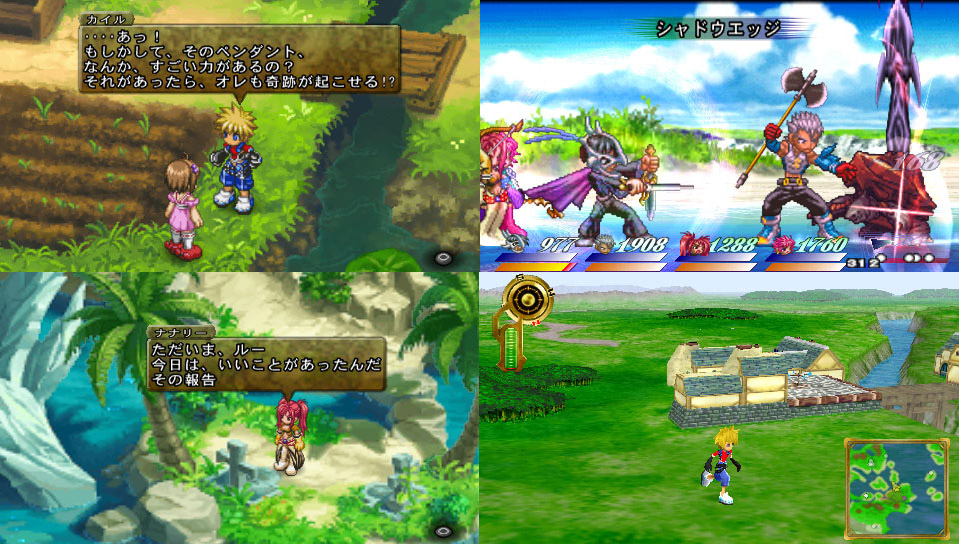
Final Fantasy isn’t the only series that has had problems with game title numbering as games reached the West. The Tales of series had a big issue in this regard as well. Western RPG fans got their first taste of the series with Tales of Destiny in 1998, then Tales of Destiny II in 2001. Well, sorry to mislead, but that’s not true. What the West really got in 2001 was Tales of Eternia, which was then renamed Tales of Destiny II to entice fans of the original to buy the game (and, likely, some copyright issues in the West). The problem with this is that, in 2002, Namco developed an actual Tales of Destiny 2 (with no Roman numeral) for PS2 that was a real sequel to Tales of Destiny. Set 18 years after the events of Tales of Destiny, the game stars Kyle Dunamis, the child of Stahn and Rutee from the original game, off on his adventure.
It’s a great game with a pretty cool plot, but unfortunately, Tales of Destiny 2 never saw the light of day in the West. Was it because of the naming fiasco? Or maybe it was the fear of poor sales? We may never really know for sure. What stings even more is that Namco had a second chance to bring it over in 2007 when the game was ported to the PSP; by this time the Tales of series was well established in the West after Tales of Symphonia and Tales of the Abyss became breakout hits. But alas, it remains one of the best Tales of games that Western audiences never got to enjoy.
Writeup by Scott Clay
Tales of Rebirth
PlayStation 2 | Released in Japan: December 16, 2004
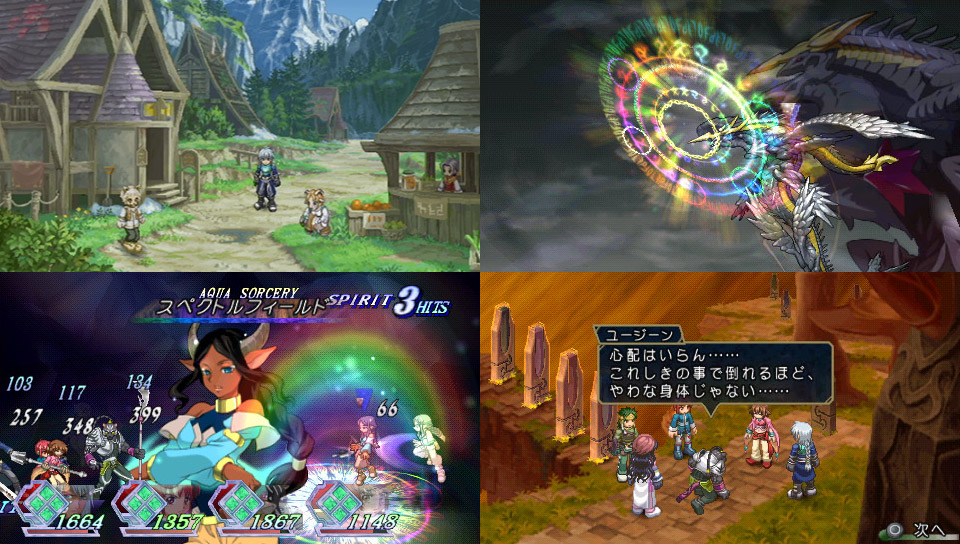
Given the Tales of series’ popularity nowadays, it’s strange to think there was a time when we were lucky to get one game in the West every three years. Tales of Rebirth was just one of the many victims of the Namco noughties negligence, and in part that might be down to the series’ shift to 3D graphics with the previous entry, Tales of Symphonia. Meanwhile, Rebirth sticks to 2D sprites which are absolutely gorgeous. The frantic battles showcase the game’s stunning visuals perfectly — colours burst across the screen, and character movements are fluid and smooth — and watching any gameplay video is likely enough to make you want to play it right away! In traditional Tales of fashion, the combat is called the Three-Line Linear Motion Battle System, which means your characters can swap between three different planes on the battlefield. This is critical to your success. The story is typical Tales of fare about love, friendship, and racism, but in a world this gorgeous, and with combat this explosive, there’s no way we can let Namco get away without localising this any longer.
Like Tales of Destiny 2, Tales of Rebirth got a PSP port in 2008 which didn’t make it over here either. Thankfully the series is much more plentiful over this side of the world now, so it’s about time to right some wrongs, Namco.
Writeup by Alana Hagues
Tomato Adventure
Game Boy Advance | Released in Japan: January 25, 2002
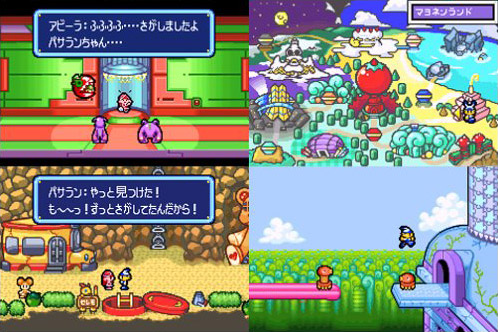
This title is NOT related to 1984’s Princess Tomato in the Salad Kingdom, which is an entirely different vegetable-themed tale with a delightful title. Tomato Adventure is a standalone RPG made by AlphaDream, whose outpost post-Tomato Adventure is mostly the popular Mario & Luigi RPGs for Nintendo handheld systems. You can see some Mario & Luigi DNA in Tomato Adventure, in which items called “Gimmicks” execute special attacks with unique mini-games, just like the Bros. Attacks in most of the Mario & Luigi titles. Unlike Mario & Luigi, Tomato Adventure stars a boy named DeMille, who is an exile of the Ketchup Kingdom because he hates tomatoes, the most revered food in the land which even has its own dedicated holiday. DeMille must overcome his dislike of the red fruit to rescue his girlfriend and save Ketchup Kingdom. This game needs a Switch remake as soon as possible, and since it actually hit the Japanese Wii U eShop, Tomato Kingdom has not been forgotten by Nintendo.
Writeup by Michael Sollosi
Valkyria Chronicles 3
PSP | Released in Japan: January 27, 2011
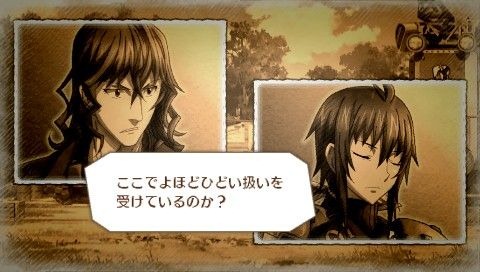
The first Valkyria Chronicles is one of the best strategy games ever, and this series is a hot SEGA property right now. Ignoring the dismal Valkyria Revolution, these strategy RPGs are innovative, exciting and a blast to play. So, with Valkyria Chronicles 4 on the horizon, it’s high time Sega released this PSP gem to fill in the gap in the West. The events of Valkyria Chronicles 3 happen in tandem with those of the first game, and follow a penal military unit called The Nameless who undertake only the most dangerous missions for the Gallian Army. VC3 retains the gorgeous watercolour and comic strip art style of the previous entries, and most of the gameplay elements from VC2 have been brought over and fine-tuned for a more satisfying experience.
Many people claim Valkyria Chronicles 3 to be the best in the series for its complex characters, refined gameplay, and difficulty curve, but while the series’ popularity has finally been recognised, the fact we’re still missing what might be the crowning achievement seems unthinkable. Just think what it would be like to see the Gallian war from the eyes of criminals who are working to become heroes. And if this ever crosses your minds, SEGA, since the fourth game is coming out on Switch, perhaps Nintendo’s console would make a good home for a port of this PSP classic?
Writeup by Alana Hagues
Update: December 16th, 2022
In 2018, we thought hard about some titles we really wanted to see localized. While we hoped one day they would happen, a handful of these actually have made it outside of Japan since then! Based on the games represented, you’d think perhaps some of the Tales games or even Fire Emblem may have made that list, but no, not yet. But these happened:
- Against all odds, BOTH Great Ace Attorney games came out on July 27th, 2021 in a package titled The Great Ace Attorney Chronicles.
- The Crossbell games for The Legend of Heroes are finally happening, thanks to a completely unexpected agreement between NISA and the fan translators at Geofront. The Legend of Heroes: Trails from Zero released on September 27th, 2022, with The Legend of Heroes: Trails to Azure coming on March 14th, 2023.
- But the flat-out, absolutely weirdest game of everything on this list that has been localized? Moon. Love-de-Lic’s wild “anti-RPG” was localized via Onion Games for PC, Switch, and PlayStation on August 27th, 2020. Who would have guessed?



